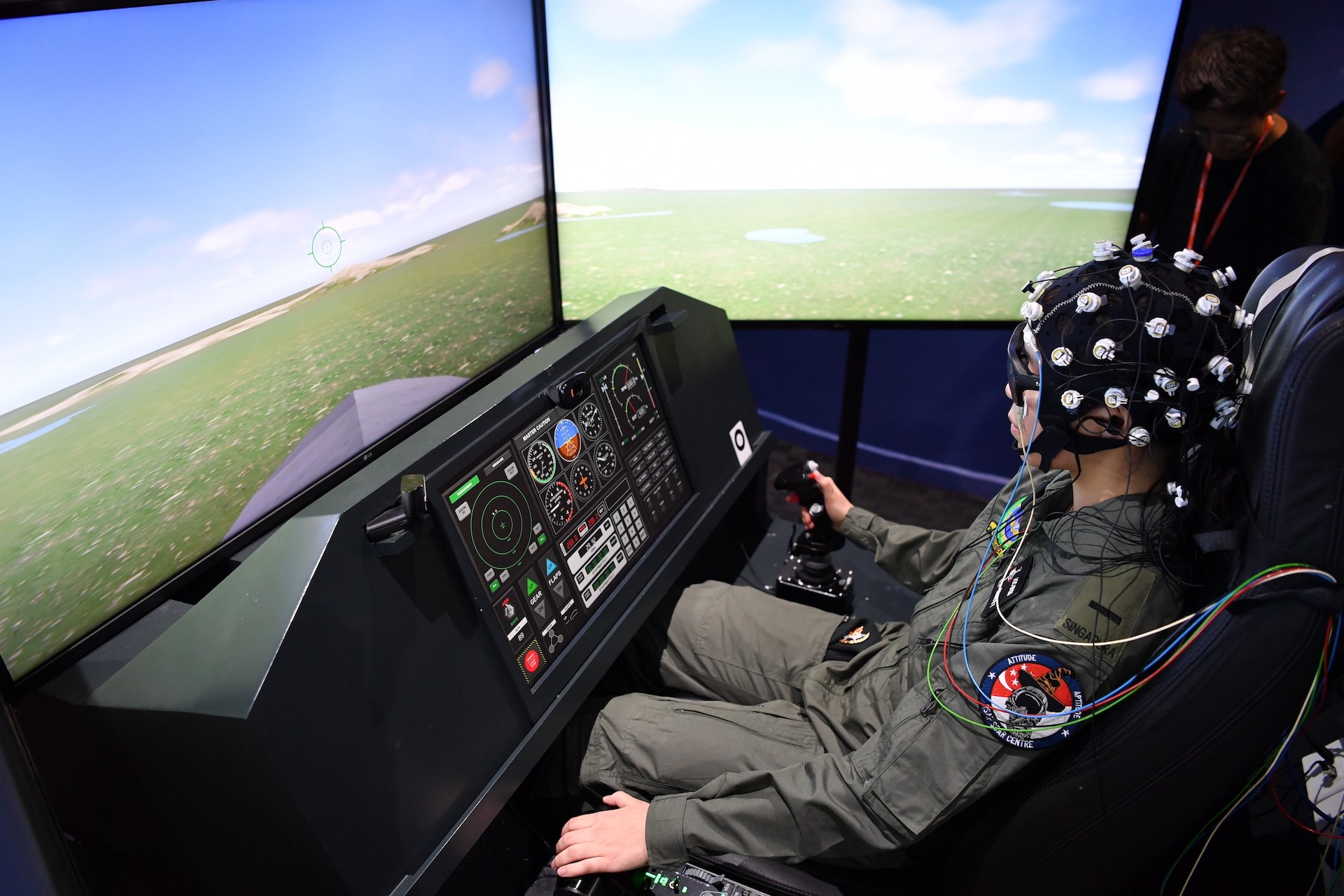RSAF USES SIMULATORS & AI TO BETTER DETERMINE PILOT POTENTIAL
Through an experimental programme using flight simulators and sports wearables, as well as data analytics and artificial intelligence, the RSAF aims to train and assess pilot trainees more effectively.
Where do pilots look at when flying? Do they remain calm in the face of an engine breakdown? How precise are their controls as they pursue and take down a target?
The Republic of Singapore Air Force (RSAF) can now answer these questions. Under a new trial programme – Project SOAR – the air force is using simulators and biometric sensors, paired with data analytics, to train and assess its pilot trainees.
Typically, pilot trainees fresh out of Basic Military Training are sent to the Air Grading Centre (AGC) in Australia, after passing their screening and aptitude test. There, they are assessed by flying the CT-4B training aircraft.
With Project SOAR, they undergo a 10-day training at the Air Force Training Command in Singapore, before the AGC.
Trainees take on different scenarios in the advanced, high-fidelity simulators at the Project SOAR Simulator Centre – while wearing equipment that capture their eye movement, facial expressions, electrocardiogram or ECG levels (that tracks heart beat and rhythm) and more.
The data is pumped into an artificial intelligence (AI) programme that is able to predict the pilot's flying potential and help improve their performance.
This allows them to learn basic flying techniques like take-off and landing, as well as go through scenarios like combat manoeuvres or handling emergencies.
Project SOAR uses data analytics and artificial intelligence to make sense of live data collected from the trainee's flight simulation. Trainees are given a debrief after each mission to learn from their mistakes.
"With data being collected in the background, along with the debriefing, (the project) can improve the instructor's assessment of the trainees, and the trainees' learning is accelerated," said Major (MAJ) Jeremy Lim, who heads SOAR.
Currently, instructors assess trainees by accompanying them on live flights to observe how they fly. This is a load on them as they note their observations on paper, while guiding the trainees and watching out for the environment, added MAJ Lim.
Trainees also don an eye tracker that is able to accurately pinpoint where they are looking at.
This means that instructors are able to advise the pilot trainees if they are fixing their gaze (for example, watching their altitude meter too much) instead of scanning both the outside and inside of the aircraft.
To integrate the wearables for this project, the RSAF partnered with DSO National Laboratories and the Ministry of Defence's Future Systems and Technology Directorate.
Project SOAR began in January 2020, with its first run of trainees starting in September 2021. Since then, 250 trainees have gone through the programme.
The feedback from trainees and instructors has been positive, said MAJ Lim. who is also a qualified F-16 pilot and flying instructor.
"Project SOAR was able to give trainees that (flying) experience before live flying… (They are then) able to work on their weaknesses during a live flight and emerge as a stronger pilot."
The programme is in its experimental stage and will be evaluated for further use in assessing pilot trainees.










